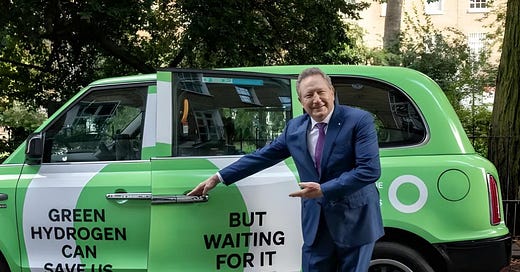With hindsight, it might have been better if Chris Bowen hadn't chosen Friday 13th to launch his new green hydrogen strategy.
Indeed, it would have been better if he hadn't launched it at all. Three weeks later, the Energy Minister's ambition for Australia to become a world leader in green hydrogen is dead after Origin Energy dropped its plans to develop a clean energy manufacturing plant in the Hunter Valley.
"It has become clear that the hydrogen market is developing more slowly than anticipated," Origin CEO Frank Calabria said in a statement. "There remain risks and both input cost and technology advancements to overcome."
The $115 million or so that state and federal governments have pumped into the project is money taxpayers won't get back, just like the millions given to Andrew Forrest's Fortescue to produce green hydrogen at Gibson Island on the outskirts of Brisbane.
A government that accepted its responsibility to spend other people's money wisely would cut its losses, recognising that green hydrogen is going nowhere fast. It would reallocate the $8 billion set aside in this year's Budget for the Hydrogen Headstart program and think twice before funding other speculative projects as part of its Future Made in Australia plan.
Anthony Albanese doesn't run that kind of government, however. He leads a bullheaded administration deaf to market signals, believing that a nascent form of technology can be bullied into becoming a commercial reality by government command.
However, the challenge of producing green hydrogen at scale and shipping it to overseas markets is overwhelming. It requires gargantuan quantities of cheap renewable energy, far more than a country like Australia with limited access to hydroelectricity can hope to produce.
Producing Bowen's target of a million tonnes of green hydrogen by 2030 would require 50 to 55 terawatt-hours (TWh) of electricity, more than half the current total output of renewable energy in Australia.
It would demand thousands of megalitres of water, a scarce commodity on a continent as wide, brown and dry as this one unless you go down the desalination path, which presents its own complications.
Keep reading with a 7-day free trial
Subscribe to Reality Bites By Nick Cater to keep reading this post and get 7 days of free access to the full post archives.




